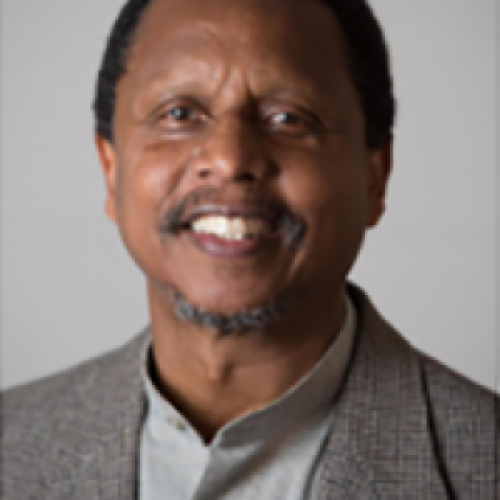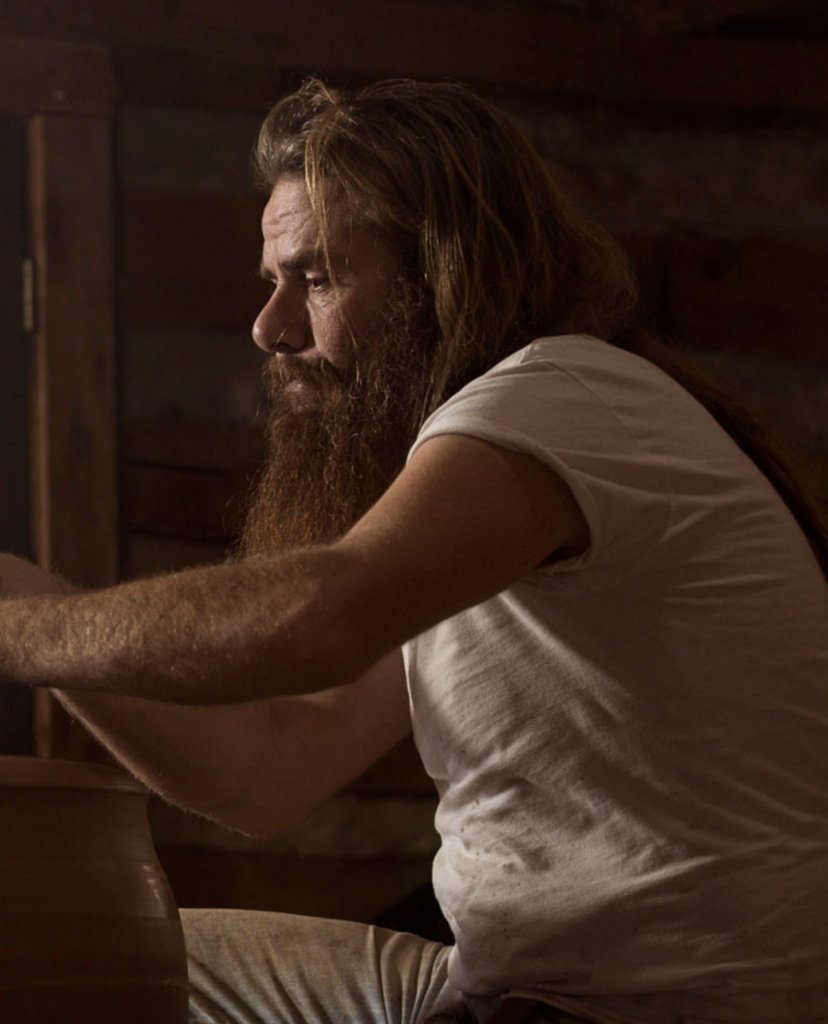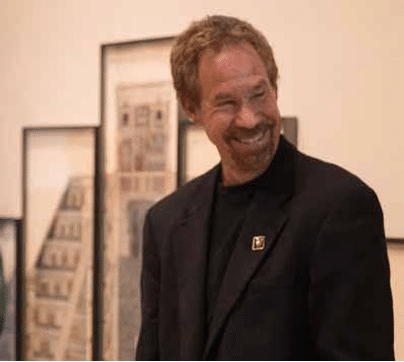Jump to:
The Architecture, Culture, and Spirituality Forum hosted its 9th annual International Symposium May 14-18, 2017 at the world-renowned Haystack Mountain School of Crafts, Deer Isle, Maine.
Haystack, Designed by architect Edward Larrabee Barnes in 1961, received the prestigious American Institute of Architects’ Twenty-five Year Award. Haystack has a spectacular coastal Maine setting that removes one from the day to day, while creating collaborative community.
In this call for proposals, we were interested in ideas from multiple perspectives and diverse communities to illuminate, inspire, entertain, consider, and experiment with ideas around the spiritual dimensions of practice, craft, materials, and making of architecture (as well as its broader implications for the built environment). To that end, we invited proposals for organized Sessions, Project presentations, traditional Papers, and Workshops. (To encourage experimentation and a diversity of presentations, people were invited to submit up to two different proposal types (i.e., Paper and Project, or Workshop and Paper).
Proposals from individuals new to ACS, and from those who have attended in the past but not presented, were especially welcomed and encouraged. There was four keynote speakers: Poet Annie Finch, Potter Daniel Johnston, Comparative Religion Scholar Lindsay Jones, and Architect Bradford C. Grant.
As in the past, the symposium was structured to focus on various aspects of the theme, and careful attention given to secure an atmosphere conducive to personal connections and in-depth dialogue. There was ample free time for connecting with oneself, other people, and Haystack’s magnificent surroundings. Optional meditation was offered each morning.
The Architecture, Culture and Spirituality Forum is a US-based non-profit organization with over 400 members from 48 countries around the world, and whose mission is to provide an international forum for scholarship, research, education, practice, design, and advocacy regarding the cultural and spiritual significance of the built environment.
“He who works with his hands and his head and his heart is an artist.” Saint Francis of Assisi
The ACS Forum is a place for makers and teachers of architecture, landscapes, art, and more—to learn from each other about the ways that architecture, culture, and spirituality intersect in our work and lives. ACS 9 was held at the Haystack Mountain School of Craft, designed by Edward Larrabee Barnes, located on Deer Isle Maine. In this inspiring setting and at this school with its focus on creating collaborative community, we gathered to explore how practice, craft, materials, and making unfold at the intersection between the built world (art, architecture, landscape architecture, planning), culture and spirituality.
The need for an articulation of the relationship between craft, architecture, and spirituality has never been greater. In a world filled with chartjunk, junk bonds, and a flotilla of junk sailing the high seas to fulfill needs that perhaps do not exist, we wished to consider the idea that care in practice, craft, materials, and making suggests a better path. The material world of architecture offers a way to clarify the human relationship to things, to advocate for touch (as well as other senses), and to articulate the spiritual value of the highest human capacities for making and practice.
We were interested in receiving 4 types of proposals:
As usual in our symposia, there was an ACSF Membership Meeting on Thursday morning to provide a place for members to discuss the organization’s next steps.

Poet Ani (Annie Finch) is a poet, performer, editor, critic, teacher, nonfiction writer, and verse playwright, author of more than twenty books of poetry, plays, translation, literary essays, textbooks and anthologies. The most recent of her six books of poetry is Spells: New and Selected Poems (Wesleyan University Press, 2013). Her poems have appeared in journals including Kenyon Review, Harvard Review, Paris Review, Partisan Review, Poetry, Prairie Schooner, and Yale Review, and in anthologies such as The Norton Anthology of World Poetry, The Penguin Book of the Sonnet, and The Penguin Book of Twentieth-Century American Poetry. Her writings on women and spirituality appear in her column in the Huffington Post. The performance will take place at the historic Stonington Opera House.

Bradford C. Grant is the Associate Dean of the College of Engineering, Architecture, and Computer Sciences at Howard University. He received his Master’s degree in Architecture with a focus on social and cultural factors from the University of California at Berkeley. A registered architect, Mr. Grant has extensive experience in housing and community design. Professor Grant has served as President of the Association of Collegiate Schools of Architecture (ACSA 2001-2004). He is involved in research, practice and teaching of architecture, accessibility and Universal Design, Fair Housing and cultural issues in architecture. He is currently the president of the Association for Contemplative Mind in Higher Education (ACMHE).

Daniel Johnston, Potter, grew up in a farming family but found influence in the local pottery community of Seagrove, North Carolina. He has apprenticed widely, devoting his time to understanding the many traditions of his craft, utilizing local materials and firing large wood-burning kilns in North Carolina, England, and Thailand. During his time in the village of Phon Bok, he worked with Thai potters producing utilitarian jars. His work is featured in museum collections including The Mint Museum of Art, The Gregg Museum of Art & Design, and the North Carolina Pottery Center. He has lectured and taught at the Smithsonian’s Folk Life Festival, Penland School of Crafts, Haystack Mountain School of Crafts, and St. Ives Ceramics in St Ives, Cornwall, England.

Lindsay Jones, Professor, Department of Comparative Studies, The Ohio State University, is a leading scholar of religious studies and a dynamic and accessible speaker. Among his many publications, he is author of The Hermeneutics of Sacred Architecture: Experience, Interpretation, Comparison, and the editor-in-chief for a heavily revised second edition of Mircea Eliade’s sixteen-volume Encyclopedia of Religion, the standard reference work in the field. His current project involves a three-book set that undertakes a 2500-year “ritual-architectural reception history” of the southern Mexican archaeological-tourist site of Monte Albán, Oaxaca.
Symposium activities took place on Deer Isle, Maine, at the world renowned Haystack Mountain School of Crafts. With a campus designed by Edward Larrabee Barnes, built in 1961, winner of the American Institute of Architects’ Twenty-five year Award, Haystack was a fitting place to convene ACS9 around the theme of Practice, Craft, Materials, and Making.
Deer Isle spreads out over some forty square miles, much of it woodland. It is an unpretentious place with abundant natural coastal beauty and a strong and vibrant community. Deer Isle has two towns: the small village of Deer Isle, and the much larger town of Stonington (home to Maine’s largest lobster fishing port). Deer Isle is also home to a number of vibrant and successful cultural and community institutions. Especially notable are Haystack, and the Stonington Opera House, revitalized over the last fifteen years as a community asset. Some 2500 people live on Deer Isle year-round. A spectacular cabled bridge, completed in 1939, connects the island to the mainlan. For more information, follow this link.
For those with additional time and interest in experiencing more of Maine, we suggested arriving early or staying after the conference. The island has a full range of accommodation options, including the Deer Isle Hostel, Boyce’s Motel, The Inn on the Harbor, The Pilgrim’s Inn, and numerous cottages and houses for rent.
Edward Larrabee Barnes designed Haystack to foster community, including the deliberate design of simple shared accommodations. The wood cabins are unheated, and arranged for the multisensory experience of the sea’s sound, smell, site, and atmosphere. Most of our housing will be in double cabins with private baths, with some additional housing in quad or bunkroom with shared baths. A very limited number of single rooms were available but not guaranteed.
The main presentation venue was the 100-seat Gateway auditorium, also designed by Barnes and added to the Haystack campus in 1979.
The Haystack dining hall similarly seeks to foster community through the social construction of space. Haystack is rightfully proud of its excellent and plentiful food, break-snacks, desserts, and locally roasted coffee. Haystack achieves this excellence in food in part by supporting and relying on many local organic produce growers.
All-inclusive (registration; shared lodging; beautiful, plentiful food; all events; $25 ACSF fee): $565.* **
* (We did not anticipate availability of singles, or the need to use the bunkrooms. However, the charge for a single, if available, was $765. Bunkroom, if required, $465. All room assignments were made on a first-paid, first-served basis — with priority given to presenters. Roommate assignments were made for attendees if people did not mutually provide the name of a roommate.)
** (As with past ACS conferences we sought a sharing economy and operate a break-even budget. In the unlikely event conditions dictate we reserved the right to adjust the shared cost)
In the spirit of the ACS community, we asked participants and attendees to attend the entire conference. No reduction in full rate or partial refunds was possible.
Deer Isle can be reached by car from Bangor International Airport (1 hour, 20 minutes), Portland (3 hours), and Boston (5 hours). Like in other ACS Symposia far from an airport, we distributed a ride-sharing list for those wishing to rent and share cars. We also took reservations for a Sunday afternoon/Thursday morning shuttle to Bangor International Airport.
Weather on Deer Isle in May is variable and unpredictable. Attendees should plan for cold, drizzle, rain, fog, etc. (layers and rain gear), although it can also be pleasant and warm. In mid-May the average low is 42°and the average high is 65°F (record low 30° F, record high 91°F).
To view this year’s papers and works, please click here.
Collected Abstracts of the Ninth ACS Symposium (May 14-18, 2017)
Edited by Ben Jacks, Rebecca Krinke, and Mikesch Muecke (Symposium Chairs)
Note: all submissions to the symposium underwent blind-peer review by at least 3 readers. Archived 05/08/2017
General Topic: Practice, Craft, Materials, and Making
—
| Norman Crowe | Learning from Pre-Industrial Craft: Transcendence and Meaning in the Production of Practical Artifacts |
| Debbie Loo & Jun Jie Woo | Beyond Utility and Glamour: the ‘little way’ of traditional crafts in Global City Singapore |
| Prem Chandavarkar | On Craft and Design Practice |
| Ruthan Lewis | Crafting the Space Explorers’ Long Duration, Deep Space Habitat |
| Robert Dermody | Deer Isle Bridge: How a work of engineering infrastructure changed the life and landscape of a Maine island |
| Elizabeth Swanson | The Space Between |
| Travis Bell | Home Economy: Designing Multi-Family Dwellings for the Practice and Craft of Living |
| Phoebe Crisman | Creating Contemplative Spaces: An Urban Cistercian Monastery |
| Lucca Townsend | Cemetery in the City |
| Mark Baechler and Mary Griep | Contemplation as Studio Practice |
| Susie Coliver & Amy Reichert | Visual Midrash: The Design of the Sacred in Judaism |
| Caitlin Watson | Sensing the Sacred: Architecture and Truth in the Work of Père Marie-Alain Couturier |
| Anat Geva | The Collaboration of Sacred Architecture and Art in Modern American Synagogues |
| Ben Jacks | Atmospheres and Images: a House on Deer Isle |
| Katherine Ambroziak | Cardinal Points: A Crafting of Memory in Installation Design |
| Sanda Iliescu | Contemplation and the Everyday: A Mural in a Public Bathroom |
| Michael Nicholas-Schmidt | Oratory of Notre-Dame-de-Lorette |
| Georgia Saxelby | The Art of Ritual / The Ritual of Art |
| Lorena Checa | The Making of a Tree House: Inviting Transcendence by Design |
| Rebecca Krinke | The Dakota Language Table |
| Dennis Allan Winters | Making a Garden for Meditation |
| Tammy Gaber |
Room Sometimes wIth a View: Collage as a Mode of Examination of Gendered Spaces |
| Tammy Gaber, Safira Lakhani, & Jessica Lam | An Argument of Craft for Prayer: A Contemporary Mosque Design in Northern Canada |
| Michael Crosbie & Rebeccah Tuscano-Moss | Construction as Prayer: The Making of the Sukkah |
| Julio Bermudez & Sandra Navarrete | Tectonics and Spirituality in Brutalist Architecture: Phenomenological Reflections |
| Phoebe Crisman & Sanda Iliescu | Leaves of Grass: A Contemplative and Participatory Drawing Workshop |
| Michael Karassowitsch | Experiencing the Relationship of Spiritual Practice and Architectural Practice: Toward Craft of Preparing Loci for Presencing Architecture |
| William Tripp | Drawing Workshop |
| Jeff Dardozzi & Gary Smith | Shifting Centers – Changing Worlds: Do We Need Theory to Ride a Bicycle? |
| Clive Knights | Always fully present, never fully revealed: Coaxing figures from the dark |
| Lindsay Jones | Architectural Pedimentos: Crafting Petitions for a Better Life in Southern Mexico |
| Daniel Johnston | A Life Apprenticed to a Pottery Tradition |
| Bradford C. Grant | Design is an Act of Love: Contemplative Practices in Design Education |
| Annie Finch w/ special guests, Church of the Morning After | Calling in the Spirit of Place with Poetry and Ritual |
To download a copy of this year’s Symposium program, click here.
To download a copy of this year’s Symposium participants, click here.

ACS 9 participants posing together (a few missed the shot, sorry!).
Ben Jacks (Co-chair) — Miami University
email: jacksbm@miamioh.edu
Rebecca Krinke (Co-chair) — University of Minnesota
email: rjkrinke@umn.edu
Mikesch Muecke (Co-chair) — Iowa State University
email: mikesch@iastate.edu
Julio Bermudez (Webmaster) — The Catholic University of America
email: bermudez@cua.edu